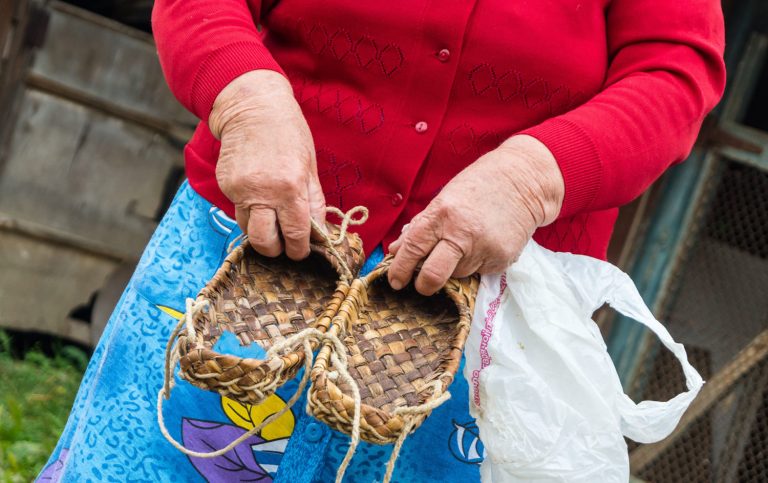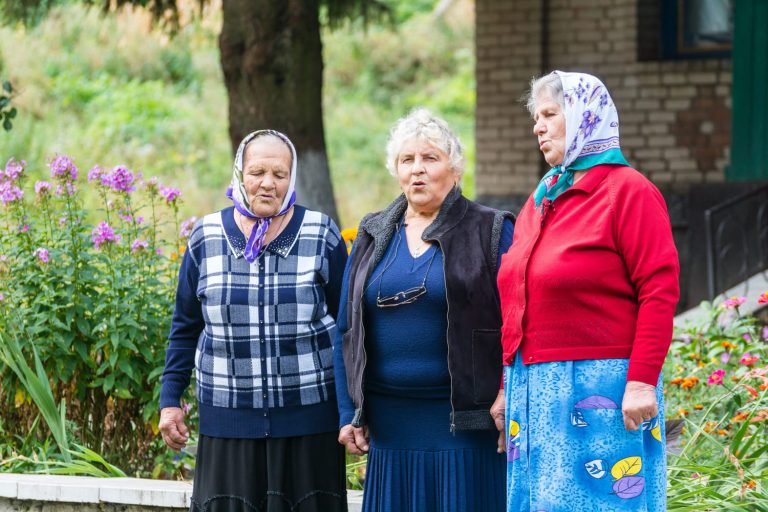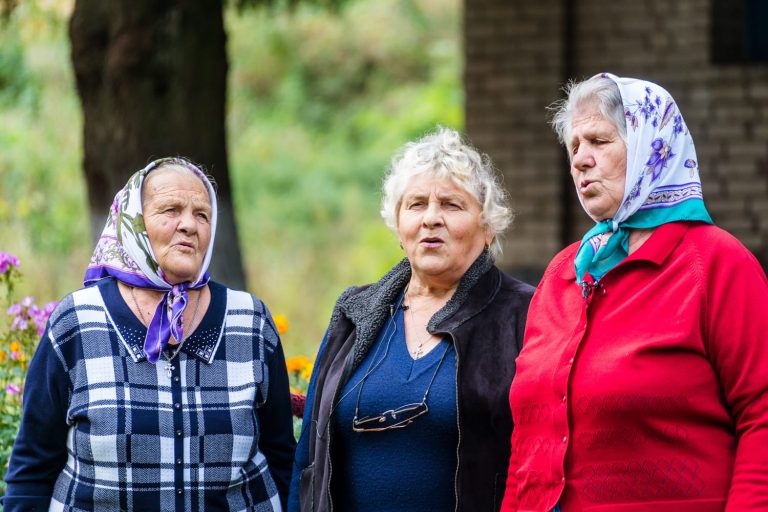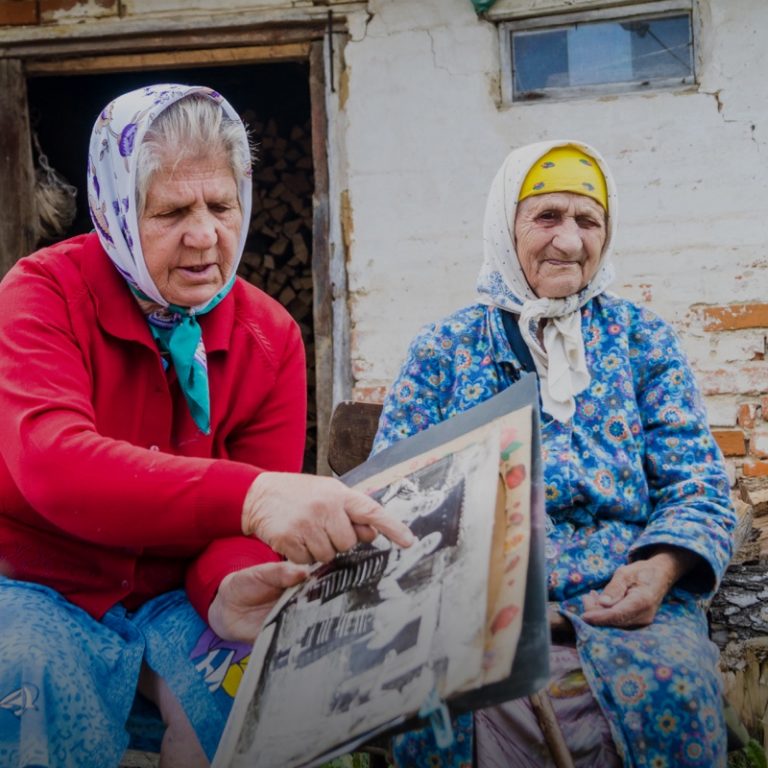In Slobozhanshchyna, near the cities of Putyvl and Bilopillia, Horiuns live. They are an East Slavic subethnic group that was formed on these lands in the 16th century. Now, there are only a few thousand Horiuns left.
Despite their small population, they still cherish ancient traditions and sing ancient songs in a unique Horiun dialect — a combination of Ukrainian, Russian, and Belarusian languages, and, a few years ago, a museum of Horiun culture was created in the village of Nova Sloboda.
Where did the Horiuns come from?
In the 16th–17th centuries, the settlement of the uninhabited steppe territories, called Dyke Pole (Ukrainian ‘Wild Field’ — ed.), and the formation of Sloboda Ukraine began. Colonisation of Slobozhanshchyna continued until the end of the 18th century. A significant number of Russian immigrants from the Tsardom of Moscow, as well as Belarusian and Lithuanian migrants — from the Grand Duchy of Lithuania — in the 16th–17th centuries were military, and before them — were peasants and Old Believers, who were subjected to religious persecution. They, together with the local autochthonous population Sivriuks (descendants of the tribal union of Siverians), became the basis of the Horiuns’ ethnic group.
Horiuns were first mentioned in 1591 in the works of Putyvl scribes. At that time, Sloboda Ukraine was part of the Moscow Tsardom, and Putyvl was one of the military and administrative centres of these lands — it served as a border defence town. But already at the end of the 17th century, the town lost its status, and the main occupations of local residents became handicrafts and trade.
Given the ethnic diversity of Slobozhanshchyna, the presence of elements of everyday life and traditions of the Ukrainian, Russian and Belarusian peoples in Horiun culture does not seem surprising.
Currently, there is no single explanation for the etymology of the word ‘Horiuns’ (Ukrainian ‘Horiuny’ — ed.). Among local residents, a common version is that in ancient times, it was hard to live here and people grieved (‘grief’ in Ukrainian is ‘hóre’ — ed.). There is also a version that the first settlers lived on a mountain (Ukr. ‘horá’ — ed.) or surrounded by constantly burning forests (Ukr. ‘hority’ — ed.).
A Horiun by origin, Zhanna Dzekunova, head of the Horiunochka folk group in the village of Lynove, tells about the appearance of the subethnic group as follows:
“There are different versions. That people were resettled here from Russia, Ukraine, or who knows where. They lived and settled here and formed their own dialect, their own traditions, costume, songs.”

In the 20th century, the Horiuns lived in large families, and in the post-war period they worked on farms and collective farms.
This is how local women remember the hungry post-war years, a period which coincided with their childhoods:
“Potatoes were scarce, and not all of us had them. We lived hard lives, and often searched in the fields for any unharvested, often rotten leftovers. People baked surrogate bread ‘matorzhanyks’. This was a period of famine nonetheless.”
Today, in addition to Lynove, Horiuns live mainly in Nova Sloboda, Yurievo, Rudnieve and Shyriaieve. Since the beginning of the 20th century, their population has decreased from 15,000 to just thousands. Mostly elderly people remained in the villages:
“Previously, there were sixteen or more children in families. Now, the village [Lynove] is extinct: only about 400 people may remain. That’s it. We survive. Only the old ones remained.”
Bast shoes, paniova skirts and pottery making
The identity of Horiuns can be traced, in particular, to their traditional wear. The female formation of Horiuns, for example, consisted of a shirt (‘chokhva’), a skirt (‘paniova-plakhta’) with an ‘apron’ element, and a wimple.
The women sewed and dyed all their clothes themselves:
“Then the canvas was painted with Alder. People would plane the bark, boil it and soak the canvas in the infusion. And so it was painted.”
People recall that the canvas was woven from hemp, which was previously actively grown here:
“Our people were used to sow cannabis plants. They would soak the harvested plants in the swamps, using swamp water, beat them with special machinery, split them into threads and hand them over for spinning. Finally, women would weave the canvas at home.”
Perhaps the most characteristic item of Horiun’s wardrobe was bast shoes — shoes that were woven from bast linden fibers. Often such shoes were worn by the family members in turn.
Lynove was also a large pottery centre. Nina Kaliuka, a member of the Horiunochka ensemble, says:
“We are called the village of ‘pottery makers’. This is how we are jokingly called by others. All our men were real craftsmen in pottery making. People were also making furnaces, where those pots were burned. They were making various kitchenware, such as spoons or bowls. The whole village was famous for it. People were taking their articles to the local farmsteads. Carts were loaded and taken to sell in Putyvl and everywhere else too.”


slideshow
The most common Horiuns’ names, according to residents of Lynove, were the following: Klym, Klavdia, Oriekh, Filantii, Herasym. One of the most unusual was the name Pood. The name you were given at birth often depended on your parents’ social status:
“As such, if the family was poor, then a child would be given a sort of ugly name at christening. But if the priest was more or less friendly, then he would give a prettier name.”
In addition to their original singing, clothing and unique dialect, Horiuns are proud of their hospitality and openness. One member of the ensemble ‘Horiunochka’, Tetiana Skvortsova, states:
“Our people are very kind. They are not indifferent to any passerby. Whoever comes by — they’ll greet him, feed him, and never let him go without a proper welcome. Our people are very kind.”

Horiuns singing
The Horiuns gained the greatest fame precisely because of their unique songs. Horiuns’ singing is recognisable due to its authentic dialect and polyphony, which creates a richer sound.
Horiuns mostly sang without any musical accompaniment. The song was started by a ‘leader’ and then the rest of the voices joined in singing lower notes. The song tradition of the village of Lynove has undergone a significant simplification. If in the last quarter of the 20th century Horiuns’ songs were characterised by complex polyphony (with five or seven voices), now they are sung mainly in two voices.
One of the most striking signs of the local song tradition is ‘callings’ (Ukr. ‘hukanky’) — specific interjections of a certain length and height at the end or in the middle of songs or stanzas of a certain length and height.
Lukeria Koshelieva is a resident of the village of Lynove. In the 80s, she was a member of a local ensemble that often toured, mainly in Russia. Talent and voice, says the woman, she inherited from her mother, who at one time was one of the most skilled singers in the region.
In 2005, people in Lynove decided to revive singing traditions and founded the Horiunochka collective, which today has eight participants. The head of the ensemble Zhanna Dzekunova claims that there is no analogue of Horiuns’ singing in any culture:
“We sing songs in our own Horiun language. We have a mix of Russian, Ukrainian, and Belarusian languages and use a special pronunciation for the words, such as: ‘what’, ‘who’, ‘him’, ‘ran’, ‘brought’, ‘carries’, ‘transports’, and ‘travel’. Our Horiun songs are not sung anywhere else.”

Boyar, boyar
Good curly-headed,
White curly-haired,
White curly-haired.
Hold on the reins evenly,
To go ringing around.
To go ringing around,
The horses are tired,
And the boyars perspired.
And the boyars perspired,
They wanted wine,
They wanted wine,
Sweet honey.
The members of the ensemble are mostly over the age of 70, but despite their advanced age, the singers still tour: mostly Slobozhanshchyna and Naddniprianshchyna.
In addition to Lynove, people sing willingly in neighbouring villages, such as Nova Sloboda, but the manner of singing there is different, says Tatiana:
“No one else will sing and pronounce the way we do it here. Nobody will. Take Yuriieve village near Putyvl, which is in the vicinity, for example. They also sing our songs, but they still sing them differently.”


slideshow
Women say that local people have never stopped singing. Singing was an integral part of any holiday or activity of the Horiuns:
“Our grandmothers and great-grandmothers sang the same songs. Up to fifteen old women were gathering at our house during the festivals. There was no place to sit. They threw all their fur coats on the earthen floor and sat down to sing. Meanwhile, we were on the masonry stove.”
Wedding, ritual, and calendar songs were sung in families from early childhood. So they passed from generation to generation, recalls Nina Kaliuka:
“We are sitting on the masonry stove. We, the children, were not allowed to sit at the table before, until the old ones ate. So they will give mashed potatoes. With cabbage. First we eat and then sing songs.”
Although the local youth do not know the old songs, they do also have a talent for singing. Horiunochka tries to pass on its song traditions to a new generation.

Oh, my two blue-grey pigeons
Oh, my two blue-grey pigeons
Please fly to my place, to my region
Please fly to my place, to my region
Please tell my father
Please tell my father
And my dear mother
That I’m captivated here
That I’m captivated here
By a local servant
By a local servant
I don’t know anyone around
And have to bow low to the ground
And have to bow low to the ground
To married and unmarried folk
To curly-headed Ivanushka
National Identity
Although Horiuns are a combination of three Slavic ethnic groups, they only identify themselves as Horiuns. The distance between the Horiuns’ villages and the border with Russia is only 15 kilometres. Until the end of the 1920s, these villages belonged to the Kursk province and then became part of the Ukrainian SSR. Zhanna explains:
“Our passports are Ukrainian, and the birth certificate says: ‘Russian’. So, it turns out that we are still a mix. We are Horiuns. Well, we mostly speak Russian though.”

However, Horiuns understand the Ukrainian language without any problems, and they also teach Ukrainian in schools:
“Whatever it was, but we live in Ukraine, this is our homeland, we are worried about our motherland.”
Since 2017, the Museum of Horiuns culture has been operating in the village of Nova Sloboda, where excursions are conducted exclusively in the Horiun dialect. Visitors have the opportunity to hear old songs, get acquainted with traditional cuisine as well as vine weaving techniques.


